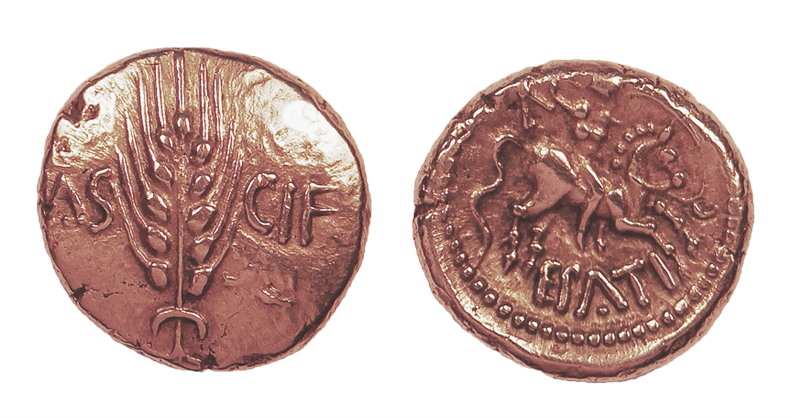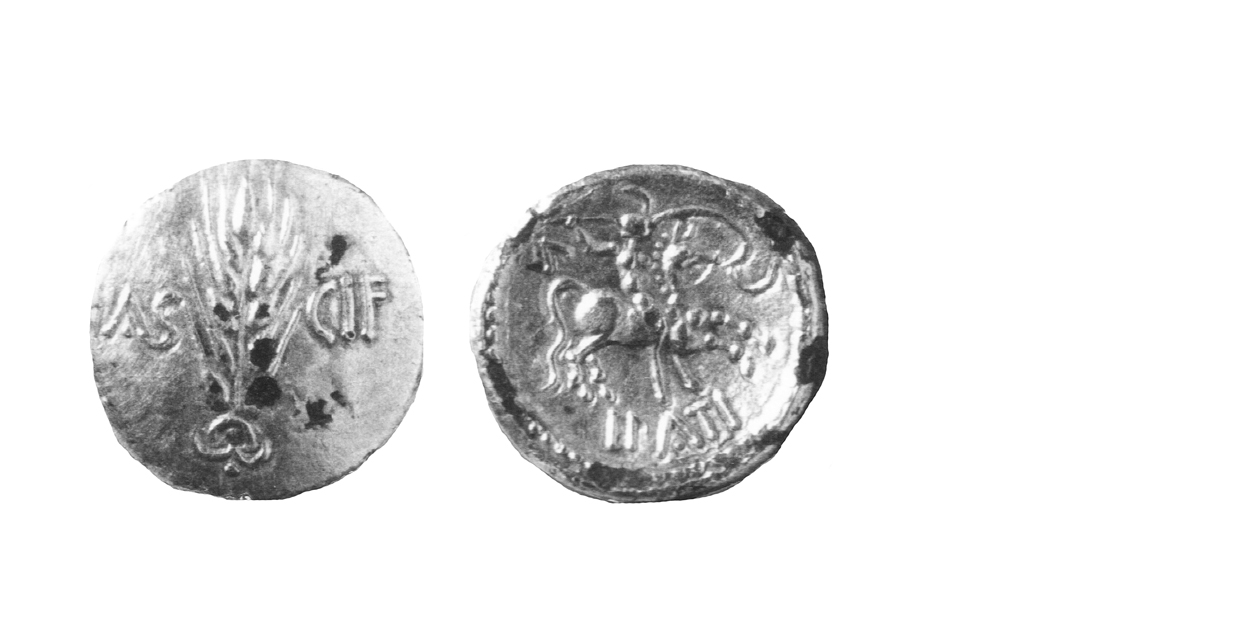
About the Coins
Function of the Coins (Info)
How abtract images obscure the monetary function of the coins
The abstract images are misleading. Although Celtic die-cutters drew their inspiration from Greek and Roman coins, their work is too easily dismissed as incompetent copying. The die-cutters created exactly the images they wanted – and knew exactly what they were trying to accomplish. There is no lack of die-cutting skill to explain the distortion in a Celticized image.
The coinage as a whole suggests centralized control of production. Weights were standardized and coins were undoubtedly produced using quality control procedures. The silver units of the Iceni were struck to a standard of 1.25 grammes for nearly a hundred years and thousands were produced within two or three percent of the standard (83). The Icenian moneyers were measuring weight to better than five hundredths of a gramme.
The manufacturing operations required to produce such skillfully made coins argues for centralized control. People wanted confidence in the value of their money the authorities used technology and organization to provide it.
The overall impression is that a monetary economy eventually developed in Britain. By the time of the Claudian Invasion, the coins were used in everyday transactions – people spent them, saved them and gave them as gifts. Some were donated to temples, others perhaps used to finance wars. They were even counterfeited (80).
Can all this be true?
There are two arguments for a non-monetary function: one, the gold staters must have been extremely valuable and could not have been useful for money transactions; and two, there were not enough coins in circulation to facilitate a money economy.
The two arguments certainly do not hold for the period after 50 B.C. (87). Small denomination coins existed in large quantities and would have facilitated a money economy. Furthermore, the total number of gold staters and quarters in circulation was very large, especially in the first century A.D.
Allen estimated the size of Cunobeline's gold coinage based on the number of known dies and the likely number of coins struck from each (88). An output of 30,000 pieces a year was calculated, with the total output estimated at one million staters. This sum appears reasonable because it compares well with known payments in Gaul. The annual tribute paid by the Gallic tribes to Rome after the Gallic Wars was the equivalent of three million of Cunobeline's staters. Similar results for Dobunnic coinage have also been suggested (151). An excessively high value cannot be supported for such common coins.
Ancient forgeries
Counterfeiting was a problem throughout most of the period. The commonest kind of forgery is a stater struck from false dies on a gold-covered bronze core. It has been suggested these were intended to pass as low denominations but have the more pleasing appearance of gold (84). Such a suggestion is unlikely since the plating process would have been costly in materials and time. The most probable explanation of these base coins is they are simple forgeries, intended to deceive.
The typical forgery is often unworn and has a test cut at the edge, exposing the bronze core. Often the cuts are harsher than necessary to reveal the base interior, suggesting frustration and anger on the part of the discoverer. People must have been aware of the forgery problem and were testing light-weight coins. The forgeries were immediately discarded on discovery, and today are found relatively unworn. The existence of these forgeries in such large numbers suggests a circulating coinage (85).
A disproportionate number of forgeries have been discovered at the site of the Dobunnic mint at Bagendon (86). The excavators suggested the counterfeits were being produced at the mint; but a more likely suggestion is they were being brought to the experts at the mint for authentication. Counterfeiting and counterfeit-detection schemes are all common aspects of commercial transactions in money economies.
Next section – Art

